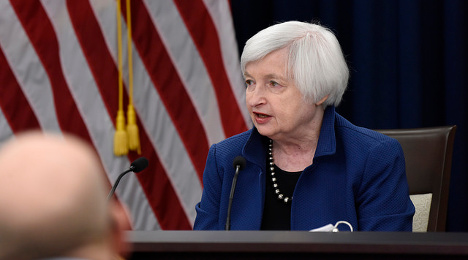Earlier this week, Reynolds and Reynolds announced the release of the Reynolds LAW Maine F&I Library, just a short while after the firm unveiled a similar product for a neighboring state with the rollout of the Reynolds LAW Vermont F&I Library.
In both of these instances, as well as for the more than 30 other states where Reynolds offers resources, the library is a comprehensive catalog of standardized, legally reviewed finance and insurance (F&I) documents for franchised dealers in the state of Maine and Vermont.
“The pressure of regulatory scrutiny is a constant for automotive dealers,” said Jerry Kirwan, senior vice president and general manager of Reynolds Document Services. “The documents in the LAW Maine F&I Library are regularly reviewed for legal sufficiency by Reynolds' industry-leading forms specialists alongside our outside legal partners. As a result, the library is a tool designed to help dealers better meet compliance obligations and manage risk.”
Kirwan went on to say, “We are pleased to announce the new LAW Vermont F&I Library. Regulatory scrutiny is an ongoing pressure on automotive retailers, and the LAW Vermont F&I Library is a tool designed to help dealers meet compliance obligations and manage risk.”
Kirwan also noted that because the documents in the library are written in consumer-friendly language, they can help dealers to establish a clearer, more efficient F&I process. A more efficient F&I process can help lead to a better overall customer experience with the dealership.
In addition, the printed documents in the Maine and Vermont F&I Libraries are available in digital format, which can help facilitate the conversion to laser-printed forms and e-contracting transactions. Reynolds Document Services maintains licensing agreements with all major providers of electronic F&I (e-F&I) solutions.
Now with Maine and Vermont in the offering portfolio, other states where Reynolds resources are available include: Alabama, Arizona, Arkansas, California, Colorado, Georgia, Hawaii, Idaho, Illinois, Indiana, Kentucky, Louisiana, Maryland, Massachusetts, Michigan, Missouri, Montana, Nevada, New Jersey, New Mexico, New York, North Carolina, Ohio, Oklahoma, Oregon, Pennsylvania, South Carolina, Tennessee, Texas, Utah, Virginia, Washington, West Virginia and Wyoming.
With the federal funds rate ticking up by 0.25 percent to 1 percent as widely expected on Wednesday, Federal Reserve chair Janet Yellen also described the expected median path for the federal funds rate through the close of 2019, which she insisted was “essentially unchanged,” from projections made in December.
Yellen predicted the federal funds rate upward path has it rising to 1.4 percent at the end of this year, 2.1 percent by the close of next year and 3 percent at the end of 2019. During her prepared remarks, she reiterated why the Federal Open Market Committee (FOMC) took action on Wednesday.
“The committee judged that a modest increase in the federal funds rate is appropriate in light of the economy’s solid progress toward our goals of maximum employment and price stability. Even after this increase, monetary policy remains accommodative, thus supporting some further strengthening in the job market and a sustained return to 2 percent inflation,” she said.
“Today’s decision also reflects our view that waiting too long to scale back some accommodation could potentially require us to raise rates rapidly sometime down the road, which, in turn, could risk disrupting financial markets and pushing the economy into recession,” Yellen continued. “We continue to expect that the ongoing strength of the economy will warrant gradual increases in the federal funds rate to achieve and maintain our objectives. That’s based on our view that the neutral nominal federal funds rate — that is, the interest rate that is neither expansionary nor contractionary and keeps the economy operating on an even keel — is currently quite low by historical standards. That means that the federal funds rate does not have to rise all that much to get to a neutral policy stance.
“We also expect the neutral level of the federal funds rate to rise somewhat over time, meaning that additional gradual rate hikes are likely to be appropriate over the next few years to sustain the economic expansion. Even so, the committee continues to anticipate that the longer-run neutral level of the federal funds rate is still likely to remain below levels that prevailed in previous decades,” she went on to say.
Comerica Bank chief economist Robert Dye described the tenor coming from the Federal Reserve as “just slightly more hawkish” than its previous announcement. Dye elaborated about what he meant in a commentary distributed following Yellen’s appearance on Wednesday.
“It is fair to say that the Yellen Fed remains somewhat tactical in their policy changes. By staying with their projections of three rate hikes this year and next, the Fed is maintaining flexibility around the exact timing of rate hikes,” Dye said.
“However, at the same time, the Fed has now added weight to the precedent of one rate hike every other meeting,” he continued. “As of this writing, the implied odds of the next rate hike coming at the conclusion of the upcoming FOMC meeting on May 3 are quite low at 4.3 percent, according to the fed funds futures market. The odds of the next rate hike coming on June 14 jump to 48.5 percent.
“With June near even money, that leaves the timing of the third rate hike this year in question, adding to financial market uncertainty,” Dye went on to say. “So it looks like the Fed still has some work to do in setting market expectations for the second half of this year. Fed officials are likely waiting as long as possible for some clarity on fiscal policy before they cross that bridge. Nonetheless, they will need to clarify forward guidance soon.”
Stifel Nicolaus chief economist Lindsey Piegza took a similar view when she examined the Fed’s actions and projections, also touching on what took her a bit by surprise.
“The unexpected was the language in the FOMC statement and documents accompanying the rate decision and whether or not it would provide additional guidelines for the future of monetary policy in the remaining nine months of the year,” Piegza said. “The statement, however, was somewhat disappointing, offering few hints as to the number or timing of future rate hikes.
“Acknowledging the improvement in the underlying economy, the Fed remained cautious in overemphasizing such improvement, particularly on the inflation side,” she continued. “After all, committee members are all too aware that the recent increase in prices stems in good part from a reversal in energy costs temporarily buoying the year-over-year calculation.
“However, as energy prices stabilize in the spring or summer, the upward momentum is expected to wane, eventually putting downward pressure on topline inflation measures,” Piegza added.
Certain macroeconomic trends — especially employment and consumer confidence — prompted Santander Consumer USA president and chief executive officer Jason Kulas to say that he sees a “fairly stable consumer” after he examined the finance company’s portfolio as well as the entire auto finance market.
However, those two particular economic trends could leave negative ramifications when consumers look to obtain auto financing later this year, in particular individuals who fall into the non-prime or subprime spaces.
To recap those upbeat trends, the U.S. Bureau of Labor Statistics reported this past Friday that total nonfarm payroll employment increased by 235,000 in February, and the unemployment rate remained virtually unchanged at 4.7 percent. Federal officials said employment gains occurred in construction, private educational services, manufacturing, health care and mining.
Meanwhile, The Conference Board Consumer Confidence Index, which had declined moderately in January, increased in February. The index stands at 114.8, up from 111.6 in January.
The monthly Consumer Confidence Survey, based on a probability-design random sample, is conducted for The Conference Board by Nielsen
“Consumer confidence increased in February and remains at a 15-year high,” said Lynn Franco, director of economic indicators at The Conference Board. “Consumers rated current business and labor market conditions more favorably (in February) than in January. Expectations improved regarding the short-term outlook for business, and to a lesser degree jobs and income prospects.
“Overall, consumers expect the economy to continue expanding in the months ahead,” Franco added.
SCUSA conducted its annual investor day just before each of those trends were updated. Still, Kulas conveyed an optimistic assessment.
“This is an interesting topic because there's a lot of people are out with their earnings calls talking about what they're seeing with the consumer. We've done the same,” Kulas said according to a transcript of the event posted by the finance company. “What you'll hear from us is we still think the consumer is pretty strong. It’s not that we ignore trends. We certainly factor in what we see into how we originate and how we think about the future, but the facts are pretty interesting.
“The first one is obviously employment. … The consumer has a job,” he continued. “Consumer confidence is a really positive story right now.
“If you look at debt ratios, while they’re increasing, they’re still below where they were pre-crisis, particularly if you look at auto,” Kulas went on to say. “So for us, it’s not that we ignore the trend. We certainly factor in the trends, but in our assessment of the consumer, the consumer is still relatively strong today, and that’s why we see positive performance. … That's what we see reflected in our performance, a fairly stable consumer.”
Evidently, the Federal Reserve thinks consumers are “fairly stable,” too, which is why it’s widely expected that the monetary agency will push up interest rates later this week. Comerica Bank chief economist Robert Dye is projecting the uptick to be 0.25 percent.
Dye also touched on what else the Federal Open Market Committee (FOMC) is likely to share when it meets this week. The Fed will release a new “dot plot” and economic projections on Wednesday, and chair Janet Yellen will have a press conference.
“With a Fed funds rate hike a near certainty, the focus is now on forward guidance,” Dye said. “If the Fed hikes on Wednesday, they will have begun a pattern of raising interest rates every other meeting, and on meetings with scheduled press conferences. So analysts will be looking for clues in the policy announcement, in the dot plot and in Janet Yellen’s answers to reporters’ questions about the pacing of interest rate hikes for the remainder of this year.
“The December 2016 dot plot was consistent with three rate hikes for 2017. We could see the March dot plot shift upward to be consistent with four rate hikes in 2017. The minutes of the March 14/15 FOMC meeting should prove interesting when they are released on April 5,” Dye went on to say.
Turning back to the event hosted by Santander Consumer USA, chief operating officer Rich Morrin described how interest rates inching higher might impact non-prime auto finance applicants.
“The biggest impact for the most part is going to be the fact that fewer people will not be able to actually transact because we're going to be requiring, for example, more money down to get to a certain amount financed that we're willing to extend,” Morrin said. “So what generally will happen is they just can’t come up with those dollars.”
Morrin went on to mention why SCUSA could handle that development better than other finance companies that book non-prime and subprime paper.
“If the overall market starts to kind of fall, the reason why we feel comfortable given where we are in that space is the fact that we’re a large player in the space and smaller players who are taking share, we start to become in an environment like that given our marginal cost relative to those competitors, we start to be able to pick up volume that they might not be able to pick up in that kind of environment and make better decisions about which consumer should get the right price given that dynamic.
“In an environment like that for non-prime consumers, we would expect that we actually can maintain share or actually potentially grow depending on the ultimate impact to smaller players in the space,” he added.
On Thursday, Equifax announced the global launch of a portfolio of analytics tools dubbed Equifax Ignite that’s available now in the U.S., Canada and the U.K., and coming to Australia in the fall.
The company explained that Equifax Ignite challenges what it classified as the traditional “one size fits all approach” with an innovative suite of solutions that provides fast, configurable and actionable data to solve clients’ most critical challenges and help drive their growth strategies. Offering insights through three distinct delivery channels, Equifax said this “tailored for you” approach was designed with various key users in mind — from marketing senior executives to data scientists.
The driving force behind Equifax Ignite is the company’s established insights through powerful data and analytics solutions that can help propel critical business decisions. Officials said Equifax Ignite embodies the company’s deep expertise in big data, specialized risk, fraud and marketing analytics, as well as its vast portfolio of directly sourced, directly measured data from the credit, finance and telecommunications industries.
Equifax Ignite can deliver deep insights through an extensive data portfolio including trended data, risk scoring models and the linking and keying of disparate sets of data.
“Harnessing the power of big data poses a tremendous challenge for businesses,” said Trey Loughran, chief marketing officer at Equifax. “Whether it’s providing the latest in data visualization through an app or access to our differentiated data, advanced analytical tools and technology, Equifax Ignite brings data to life and helps drive businesses forward by helping the end user become a data-driven organization.”
As an example, the company explained that with Equifax Ignite, a bank could leverage key insights to help assess risk at various decision points relevant to their unique goals. From more accurately targeting and screening new customers through market intelligence and alternative data, to creating risk models and monitoring risk scores over time, the user is able to access the vast array of insights available, using leading-edge analytic techniques.
“Equifax Ignite redefines access to data and speed to market,” said Prasanna Dhore, chief data and analytics officer at Equifax. “There is a paradigm shift happening: the market needs more tailored data solutions that don’t take months to deliver.
“Generic models aren’t relevant to many businesses’ needs, and custom models and diagnostics simply take too long,” Dhore continued. “Equifax Ignite meets market demand through a frictionless process that reduces building, testing and deployment from months to days.”
The Equifax data and advanced analytics is funneled into three delivery channels: Equifax Ignite Models and Scores, Equifax Ignite Direct and Equifax Ignite Marketplace.
• Equifax Ignite Models and Scores: Configurable scores that offer the power of a custom solution with the speed and ease of an off-the-shelf product. The Equifax Ignite portfolio of configurable scores can help businesses enhance customer acquisition, risk segmentation and decisioning, and improve customer relationships.
• Equifax Ignite Direct: Created as a self-serve platform, this high-speed solution can allow users to create analytics using direct access to data, attributes and analytical tools. Seamless integration enables teams to build, test and deploy models that suit their unique needs.
• Equifax Ignite Marketplace: A virtual destination for all of the Equifax analytical applications (apps) available for download. The apps will be leveraged for visualizing and digesting data, benchmarks and trends across industries including insurance, banking and telecommunications.
For more information about Equifax Ignite, visit Equifax.com/EquifaxIgnite.
Wise F&I, which offers an array of voluntary protection products including guaranteed asset protection (GAP), appearance care service contracts, tire and wheel protection, vehicle service contracts, theft deterrent systems, key replacement and other ancillary products, recently announced its products are now available through Darwin Automotive’s Prescriptive F&I Selling Software.
The companies said this partnership can provide automotive retailers utilizing Darwin access to all of Wise F&I products, including: GAPWise, WiseCARE, TIREWise, WiseTVP, THEFTWise and KEYWise. Darwin provides eRating and eContracting for Wise F&I products and the company also further supports online product integration through innovative F&I technology.
“Partnering with Darwin allows us to benefit from Darwin’s predictive analytics and patented technology to increase sales,” Wise F&I president Matt Croak said.
Croak insisted the partnership also can help facilitate customer transactions in the dealership. Mutual clients of Wise F&I and Darwin Automotive will be able to provide a streamlined transaction with increased efficiencies and accuracies of Wise F&I branded products to their customers.
“Offering customers a more complete online experience through Darwin will help to increase customer satisfaction,” Croak said.
Stifel Nicolaus chief economist Lindsey Piegza and Comerica Bank chief economist Robert Dye each examined the comprehensive commentary offered by Federal Reserve chair Janet Yellen regarding the possibility of another interest rate move arriving next week.
After taking in what Yellen said during her speech at The Executives' Club of Chicago last week, Dye thinks he spotted the metric that “would seal the deal” when the Federal Open Market Committee (FOMC) holds its next regularly scheduled meeting next Tuesday and Wednesday.
First, here’s what Yellen discussed. She reviewed the Fed’s monetary policy going back 10 years since the Great Recession gripped the economy.
“Although the Federal Reserve's policy strategy for systematically pursuing its congressionally mandated goals of maximum employment and price stability has not changed during this period, the Federal Open Market Committee (FOMC) has made significant tactical adjustments along the way,” Yellen said. She then called 2014 “a turning point, when the FOMC began to transition from providing increasing amounts of accommodation to gradually scaling it back.”
Yellen acknowledged that modifying interest rates — that accommodation — has moved “at a slower pace” than most FOMC participants anticipated three years ago. She touched on a pair of reasons why.
“Both unexpected economic developments and deeper reevaluations of structural trends affecting the U.S. and global economies prompted us to reassess our views on the outlook and associated risks and, consequently, the appropriate stance of monetary policy, both in the near term and the longer run,” Yellen said.
“Looking ahead, we continue to expect the evolution of the economy to warrant further gradual increases in the target range for the federal funds rate,” she continued. “However, given how close we are to meeting our statutory goals, and in the absence of new developments that might materially worsen the economic outlook, the process of scaling back accommodation likely will not be as slow as it was in 2015 and 2016.”
After going into a wide array of monetary policy explanations during her prepared remarks that are available here, Yellen closed by emphasizing the Fed must remain “squarely focused on our congressionally mandated goals.
“The economy has essentially met the employment portion of our mandate and inflation is moving closer to our 2 percent objective. This outcome suggests that our goal-focused, outlook-dependent approach to scaling back accommodation over the past couple of years has served the U.S. economy well,” she continued.
“This same approach will continue to drive our policy decisions in the months and years ahead. With that in mind, our policy aims to support continued growth of the American economy in pursuit of our congressionally mandated objectives. We do that, as I have noted, with an eye always on the risks,” Yellen went on to say.
“To that end, we realize that waiting too long to scale back some of our support could potentially require us to raise rates rapidly sometime down the road, which in turn could risk disrupting financial markets and pushing the economy into recession. Having said that, I currently see no evidence that the Federal Reserve has fallen behind the curve, and I therefore continue to have confidence in our judgment that a gradual removal of accommodation is likely to be appropriate,” she added.
Yellen’s parting thought was, “As I have noted, unless unanticipated developments adversely affect the economic outlook, the process of scaling back accommodation likely will not be as slow as it was during the past couple of years.”
Piegza digested what the Fed chair offered her examination, mixing in President Trump’s address to a joint session of Congress that articulated his objectives.
“Amid still-tepid economic data suggesting little additional momentum in the underlying economy, Federal Reserve officials continue to issue warnings to the market that a near-term adjustment in policy is imminent,” Piegza said. “Although initially dismissing policymakers’ typical and somewhat expected hawkish comments, on the heels of the president’s arguably impressive and articulate speech, albeit void of nearly any specifics, the market has now bought into the notion that future expectations — however unfounded — are enough to propel current monetary policy.
“Nonetheless, the market has been disappointed before after buying into individual Fed members’ comments,” she went on to say. “Furthermore, unless the committee opts to abandon their data-dependent stance in exchange for one of fiscal policy anticipation, the Fed will likely continue to exercise patience, pulling the rug out from under the market’s certain expectation of a third rate hike come the 15th.
Meanwhile, Comerica Bank’s Dye — who also has been a member the American Bankers Association’s Economic Advisory Committee — began his reaction to Yellen’s remarks by referencing how the college basketball season is about to intensify this month, too.
“It was early March Madness at the Federal Reserve as team Yellen exerted a full court press to pull interest rate hike expectations forward. They succeeded,” Dye said. “Yellen capped a flurry of Fedspeak with her speech saying that a fed funds rate hike on March 15 will likely be appropriate.
“Interest rates increased through the week and U.S. equity markets remained stable after strong recent gains, giving the Fed the green light for a near-term rate hike,” he continued. “The Fed goes into their pre-meeting communication blackout period, so we will not hear anything more from team Yellen.”
Dye pointed out the last major data point to digest before the March 14/15 FOMC meeting will be the February employment report, which is due on Friday.
“A solid job gain for the month of February, of at least 120,000 net new jobs, plus a reasonable gain in average hourly earnings, after January’s weak increase, would seal the deal,” Dye said.
Subprime auto finance company Veros Credit is going through what leadership called a “strategic realignment,” which includes the closing of two facilities as well as the hiring of a new senior vice president of sales and marketing.
First, Veros Credit, which is based in southern California’s Orange County, announced immediate plans to close its Nevada and Arizona dealer center locations.
“Our focus is on reducing costs, utilizing technology to increase efficiencies, maximizing productivity, and leveraging the advantages of a more centralized and growth-oriented business model,” Veros Credit chief executive officer Cyrus Bozorgi said in a news release.
“The decision to close these dealer centers is part of a long-term strategic realignment that will streamline operations and promote a more unified and modern operation,” Bozorgi continued. “Since we began this process in 2014 with the centralization of our loan servicing operations followed by our underwriting and funding operations in 2015, we have seen an increase in production while significantly decreasing our time to fund.
“We continue to seek out opportunities to craft the best possible auto finance business model to deliver prompt, responsive, and distinguished service to our dealer clientele,” he went on to say.
In conjunction with the dealer center closures, Veros Credit announced the arrival of Vic Amin as senior vice president, sales & marketing.
“Vic recently joined the Veros Credit team and immediately began developing a comprehensive approach to grow our brand and increase market share,” Veros Credit chief operating officer Harvey Singh said. “Part of that approach is a strong hiring initiative that will expand our sales force and allow us to meet the increasing demand for our services in existing and planned territories.
“We are confident that Vic and his team will exceed our expectations,” Singh went on to say.
Reporting to Amin will be:
—John Pierce, western regional vice president
—Blas Lozano, central regional vice president
—Steven Gregory, eastern regional vice president
“John, Blas and Steven have made significant contributions to Veros Credit, each demonstrating a commitment to improving systems and processes, and advancing technology and programs that will allow us to meet the needs of our dealers and customers as quickly as possible without any negative impact from the closures,” Singh said.
“The auto finance industry is becoming an increasingly complex market environment and we have realigned our organizational structure to take advantage of our growth and technological progress,” he continued. “Advancements in technology have changed the way we do business by allowing for efficiencies that make every interaction faster and easier and we’ve applied those advancements across all areas of our business.
From our expanded digital platforms and online payment solutions to our newly implemented HR and recruiting software, we are prepared to adapt and deliver on the challenges of the future as market and economic conditions change,” Singh went on to say.
For more information about Veros Credit, visit www.veroscredit.com.
The Michigan Economic Development Corp. (MEDC) this week highlighted the investment and additional personnel Credit Acceptance plans to leverage going forward.
Because, state officials said, the subprime auto finance company “is experiencing significant growth and needs to expand its facilities in the city of Southfield,” Credit Acceptance plans to invest $33 million in its infrastructure and create approximately 530 new jobs.
As a result, the company has been awarded a $2.3 million Michigan Business Development Program performance-based grant and the city of Southfield has offered support to the company in the form of a property tax abatement.
“The Michigan Strategic Fund took on an extensive agenda that promotes a wide array of new economic opportunities for the people of Michigan,” Gov. Rick Snyder said. “Today’s actions continue to demonstrate a commitment to keep Michigan on the path toward our future that leads to more jobs and better lives for our residents.”
MEDC chief executive officer Steve Arwood echoed a similar sentiment when commenting about the actions by Credit Acceptance and a trio of other Michigan firms “will fuel new economic activity across Michigan, strengthen communities and create well-paying jobs for our residents.”
When Credit Acceptance detailed its latest financial statement back on Jan. 31, the company said its year-over-year economic profit increases came in at 12.0 percent during the fourth quarter and 13.9 percent for all of 2016. The company computes economic profit as a function of the return on capital in excess of the cost of capital and the amount of capital invested in the business.
Credit Acceptance’s latest ABS move
In other company news, Credit Acceptance recently announced the completion of a $350.0 million asset-backed non-recourse secured financing. Pursuant to this transaction, the company contributed contracts having a net book value of approximately $437.8 million to a wholly-owned special purpose entity which will transfer the loans to a trust, which will issue three classes of notes:
| Note Class |
Amount |
Average Life |
Price |
Interest Rate |
| A |
$236,000,000 |
2.51 years |
99.99451% |
2.56% |
| B |
$65,500,000 |
3.22 years |
99.97989% |
3.04% |
| C |
$48,500,000 |
3.47 years |
99.99149% |
3.48% |
Credit Acceptance said this financing action has three components, including:
—To have an expected annualized cost of approximately 3.1 percent including the initial purchaser’s fees and other costs
—To revolve for 24 months after which it will amortize based upon the cash flows on the contributed contracts
—To be used by the company to repay outstanding indebtedness
“We will receive 6.0 percent of the cash flows related to the underlying consumer loans to cover servicing expenses,” Credit Acceptance said. “The remaining 94.0 percent, less amounts due to dealers for payments of dealer holdback, will be used to pay principal and interest on the notes as well as the ongoing costs of the financing.
“The financing is structured so as not to affect our contractual relationships with our dealers and to preserve the dealers’ rights to future payments of dealer holdback,” the company went on to say.
The amount of debt consumers are absorbing to acquire a new or used vehicle reached record highs during the fourth quarter, according to the latest State of the Automotive Finance Market report from Experian.
With consumers turning to longer-term contracts to help reduce costs of monthly payments, Experian reported on Thursday the average contract amount for a new vehicle reached a record high of $30,621 in Q4 2016. The average finance amount for a used vehicle also reached record levels, jumping from $18,850 in Q4 2015 to $19,329 in Q4 2016.
The report also showed the number of consumers opting for contracts with terms of 73 to 84 months on their new vehicles increased from 29 percent in Q4 2015 to 32.1 percent in Q4 2016. In the used-vehicle market, Experian found there was an increase in 73- to 84-month loans from 16.4 percent in Q4 2015 to 18.2 percent in Q4 2016.
“With the average loan amount for new and used vehicles hitting all-time highs, we are seeing the need for affordability drive consumer purchasing behavior,” said Melinda Zabritski, Experian's senior director of automotive finance.
“Our latest research shows an $11,000 gap between the average loan amount on a new and used vehicle — the widest we have ever seen,” Zabritski continued. “This upward trend is causing many consumers to find alternative methods like extending loan terms, getting a short-term lease or opting for a used vehicle to get what they want while staying within their monthly budget.”
For consumers who still want to drive something new, Experian computed that leasing a new vehicle costs an average of $92 less per month compared with financing. The average monthly payment for a new leased vehicle is $414, versus $506 per month for a new-vehicle purchase.
The number of consumers who chose to lease a new vehicle increased slightly from 28.87 percent in Q4 2015 to 28.94 percent in Q4 2016, according to Experian’s report.
Delinquency on the rise, too
Another key finding in the report is the increase in delinquency rates year-over-year. Experian indicated 30-day delinquencies inched up slightly from 2.42 percent in Q4 2015 to 2.44 percent in Q4 2016, while 60-day delinquencies increased from 0.71 percent to 0.78 percent.
In response to these increases in delinquencies, Experian asserted that finance companies continue to adjust their underwriting strategies by shifting more contracts toward customers with better credit.
For new-vehicle financing, the average credit score moved from 712 in Q4 2015 to 714 in Q4 2016. For used-vehicle contracts, the average credit score jumped 5 points from 649 in Q4 2015 to 654 in Q4 2016.
Overall, Experian said financing to deep-subprime and subprime customers decreased from 22.05 percent of the total lending market in Q4 2015 to 20.82 percent in Q4 2016. Financing to prime and super prime customers jumped from 57.86 percent in Q4 2015 to 59.41 percent in Q4 2016.
“Delinquencies are always an important indicator of the overall health of the automotive lending market, but it's equally important to watch how lenders react when they see a rise,” Zabritski said.
“The shift to a higher percentage of prime and subprime customers is a natural consequence of the slight growth in delinquencies,” she continued. “Overall, we are still looking at a very healthy lending market.”
The report also showed that used vehicle financing grew to 41.85 percent in the super prime consumer segment, an increase of 5.4 percent year over year. Moreover, franchised and independent vehicle dealers saw their biggest year-over-year increases in super prime consumer lending, with 5.91 percent and 13.8 percent, respectively.
Other key findings for Q4 2016:
—Total open automotive finance balances reached a record high $1.072 trillion in Q4 2016, up from $987 billion in Q4 2015; however, year-over-year growth is continuing to slow.
—Banks lost market share of total vehicle financing, dropping from 35.6 percent in Q4 2015 to 32.9 percent in Q4 2016.
—Credit unions and captives increased market share of total vehicle financing, growing to 19.1 percent and 28.4 percent, up from 18 percent and 27.8 percent, respectively.
—The average monthly payment for a new-vehicle contract was $506, up from $493.
—The average new-vehicle lease payment was $414, up from $412.
—The average monthly payment for a used-vehicle contract was $364, up from $359.
Perhaps it’s not yet a significant risk threat to the overall health of auto finance company portfolios, but Experian Automotive’s Melinda Zabritski explained the possible problems if your customers are using the vehicle attached to the installment contract to drive for transportation services such as Uber.
Why?
Currently, Zabritski said, there is not a clear way to track which units are being used for those purposes and which are not.
To put into perspective the potential quandary, Zabritski pointed out that finance company underwriting scorecards often consider that the customer will roll up 20,000 miles or much less on the vehicle during each year of the contract.
When SubPrime Auto Finance News returned from Used Car Week in Las Vegas last year, the Uber driver who provided transportation from Raleigh-Durham International Airport said he put more than 100,000 miles on his SUV in roughly 12 months.
So how do finance companies determine if the contract holder is driving the vehicle that much, especially for services like Uber?
“It’s been talked about, but right now there’s not a good way to measure it,” said Zabritski, who is the senior director of automotive finance at Experian. “There are only a few states that require the registration as a livery service or taxi, in which case you could measure it from a vehicle standpoint. Like through an Experian AutoCheck report for vehicles, it would show up as a taxi.
“Not all states require that so lenders look at it and say, ‘Well, how can I look at it?’ You could look at employment, but just because I work for Uber doesn’t mean I’m a driver. There’s just no hard and fast way to do that,” Zabritski continued during a conversation following a panel discussion about the subprime market at this year’s Vehicle Finance Conference hosted by the American Financial Services Association.
“It’s one of those things that it could be a potential risk since these cars are on the road significantly more than your average consumer,” she went on to say. “There’s more chance they could be in an accident, more wear and tear. As a lender, if I have to go repo this car, I think it’s got 40,000 miles on it and it’s really got 90,000. There’s that kind of potential impact.”
Uber’s online newsroom doesn’t list any specifics about how many drivers currently are in its network. However, Uber’s website highlighted it has drivers in nearly 250 North American cities, including major metro areas such as Chicago, New York and San Francisco as well as broadly classified regions such as Eastern North Carolina and Eastern Washington.
“Lenders will certainly use mileage when they’re doing pricing on originations. But also when they’re forecasting reserves, there’s a lot more analytics being put into place in those portfolios,” Zabritski said.
“In forecasting delinquency, there’s a lot about quality of the vehicle, the value if they do have to repo it and what the asset might be worth and what is the vehicle history since that can impact asset value. It’s those types of things that all get formulated in all of the planning,” she continued.
“And right now (with Uber), it’s a big unknown,” Zabritski added.
Concern about Uber driver income
Not only might risk come from collateral deterioration, finance companies also might not have clear views of how dependent an Uber driver might be on the income generated through the service to maintain payments. In fact, the income Uber drivers might generate triggered actions by the Federal Trade Commission in January.
Uber agreed to pay $20 million to resolve FTC charges that it misled prospective drivers with exaggerated earning claims and claims about financing through its Vehicle Solutions Program. Officials said the $20 million will be used to provide refunds to affected drivers across the country.
“Many consumers sign up to drive for Uber, but they shouldn’t be taken for a ride about their earnings potential or the cost of financing a car through Uber,” Jessica Rich said following one of her last actions as director of the FTC’s Bureau of Consumer Protection. Rich departed the agency on Feb. 10.
“This settlement will put millions of dollars back in Uber drivers’ pockets,” Rich added.
According to the FTC’s complaint, in its efforts to attract prospective drivers, Uber exaggerated the yearly and hourly income drivers could make in certain cities, and misled prospective drivers about the terms of its vehicle financing options.
The FTC alleges that Uber claimed on its website that uberX drivers’ annual median income was more than $90,000 in New York and more than $74,000 in San Francisco. The FTC alleges, however, that drivers’ annual median income was actually $61,000 in New York and $53,000 in San Francisco.
In all, the FTC determined less than 10 percent of all drivers in those cities earned the yearly income Uber touted. The FTC also alleged that Uber made high hourly earnings claims in job listings, including on Craigslist, but that the typical Uber driver failed to earn those advertised hourly amounts in various cities.
The complaint also alleged that Uber claimed its Vehicle Solutions Program would provide drivers with the “best financing options available,” regardless of the driver’s credit history, and told consumers they could “own a car for as little as $20/day” ($140/week) or lease a car with “payments as low as $17 per day” ($119/week), and “starting at $119/week.”
Despite Uber’s claims, from at least late 2013 through April 2015, the median weekly purchase and lease payments exceeded $160 and $200, respectively, the FTC alleges.
Officials went on to say Uber failed to control or monitor the terms and conditions of the auto financing agreements through its program and in fact, its drivers received worse rates on average than consumers with similar credit scores typically would obtain, according to the FTC’s complaint. In addition, the FTC said Uber claimed its drivers could receive leases with unlimited mileage through its program when in fact, the leases came with mileage limits.
In addition to imposing a $20 million judgment against Uber, the stipulated order prohibits the company from misrepresenting drivers’ earnings and auto finance and lease terms. The order also bars Uber from making false, misleading, or unsubstantiated representations about drivers’ income; programs offering or advertising vehicles or vehicle financing or leasing; and the terms and conditions of any vehicle financing or leasing.











